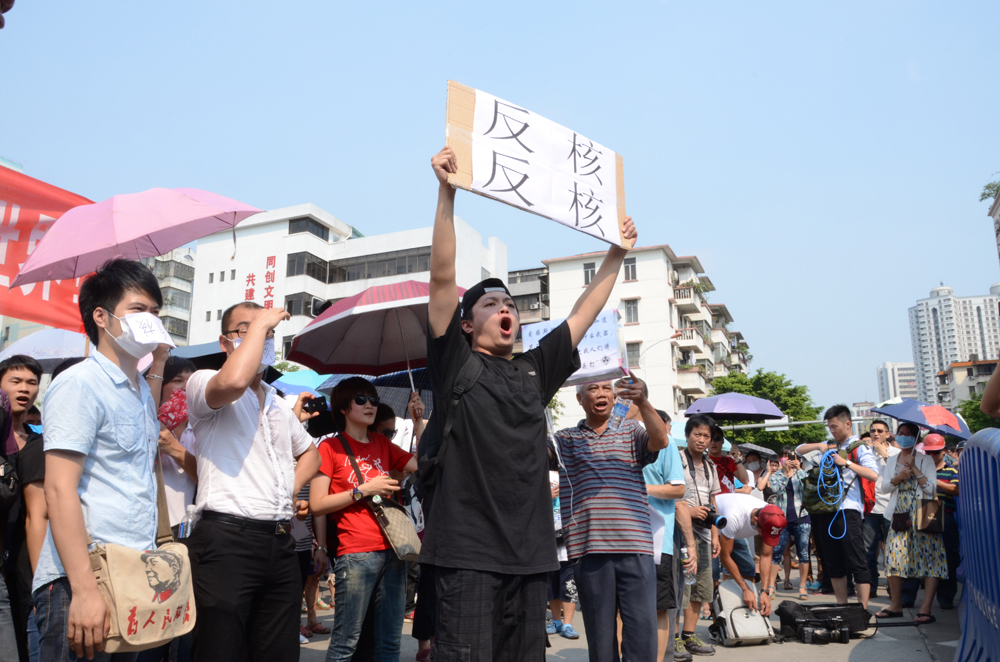Every day hundreds of protests occur all around China, often with regard to land disputes, unpaid wages, pollution or corruption. The last few days have seen a protest of slightly different kind take place in Jiangmen (江门) in Guangdong province. At least it had a different motive. The form was the usual in recent years, namely ”taking a walk” (散步), which in reality is a demonstration, but named so to avoid the prohibitions on unauthorized gatherings. Even official Chinese media used this term for the protests in Jiangmen.

China first started planning for civilian nuclear power plants in the 1970s, but not until 1991 was the first plant finished and connected to the grid, Qinshan in Haiyan County, Zhejiang (浙江省海盐县秦山), undoubtedly delayed by the Chernobyl disaster. The Daya Bay plant near Shenzhen started production in 1993 and provides around 20% of the power for Hong Kong. There are altogether 17 reactors working in China, at four sites, with another 28 under construction. Most of them are along the coast, with Xianning (咸宁) in inland Hubei province (湖北) (under construction) being one of the exceptions.
Chinese officials have claimed that there will not be a ”great leap forward” (大跃进) in building nuclear power in China. That may sound reassuring, but just a few days before the Jiangmen protests the IAEA director general, Yukiya Amano (天野之弥), said that ”China is at the center of the nuclear energy expansion in Asia”. What if protests grow stronger? What if no Chinese want nuclear power in their ”backyard”? And where to put the nuclear waste?
China is also ”at the center” for solar energy and wind power technology, and has plans for addition of 10 GW of solar power capacity to the grid annually in the coming three years, as well as 100 GW of connected wind power to 2015. What if China would take the lead in alternative energy and stop developing nuclear power? That would indeed be a great leap forward.


